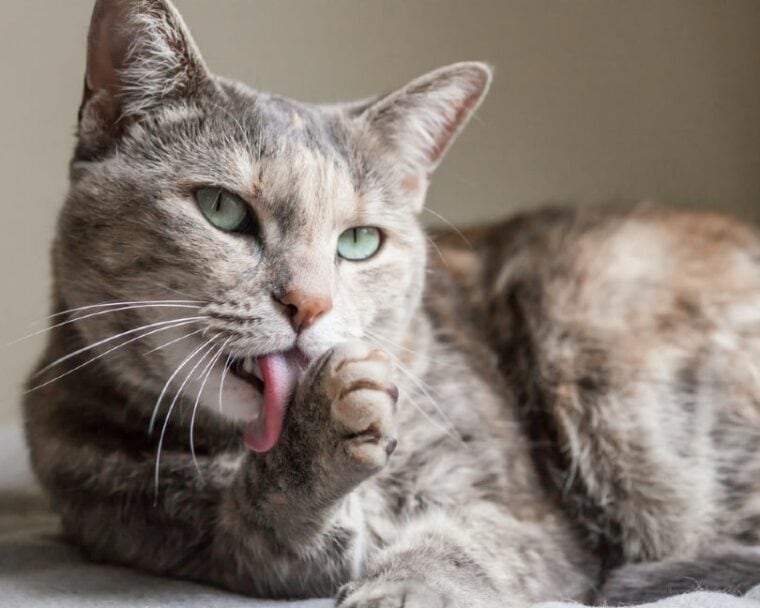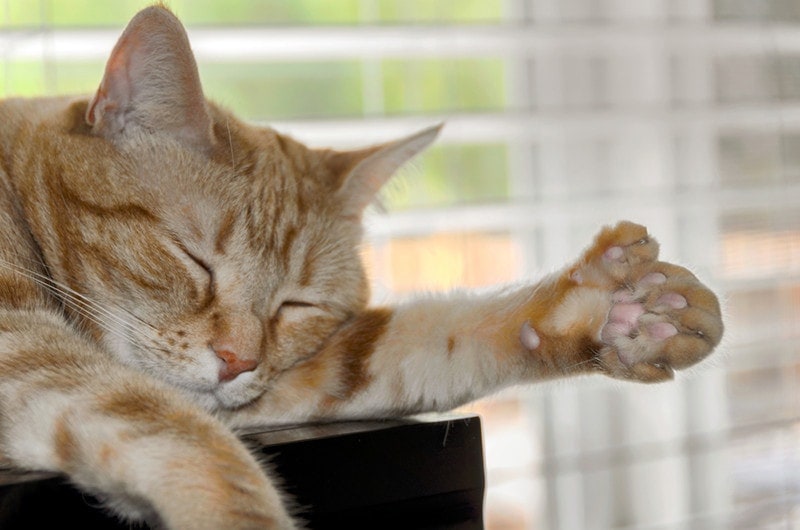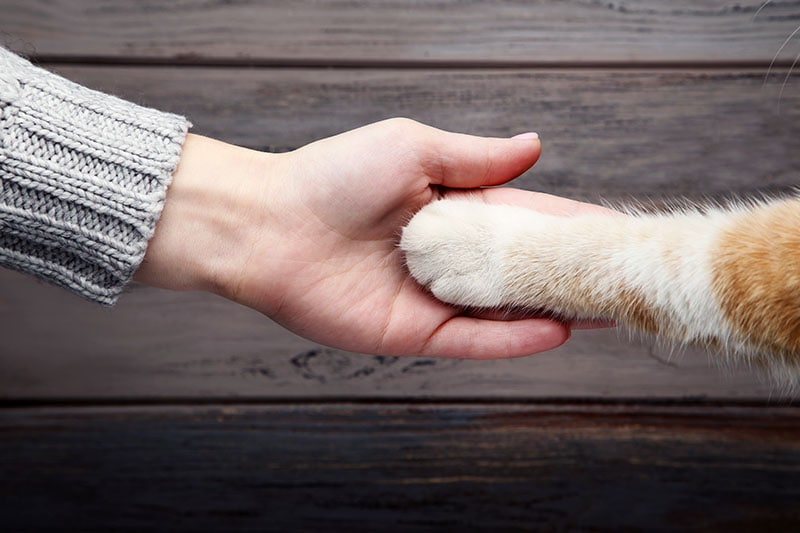
Despite popular belief and ongoing debate, cats don’t have thumbs as such. It may seem like a silly question, but it is surprisingly very common because cats are impressively dexterous creatures. Most people often assume that they must have thumbs since a cat can open doors, climb trees, and scratch.
Thus, discussing a cat’s anatomy regarding their fingers and toes and why some cats have extra toes is important. Read on to learn everything you need to know about this phenomenon.
Do Cats Even Have Thumbs?
This question has puzzled cat enthusiasts for many years, and its answer lies in evolution. Cats are descendants of the Felidae family. These are ancient carnivores, including tigers, leopards, and lions. These felines were also all digitigrades, meaning they had to walk on their toes without using the ball or heel of the foot. It gave them more agility and greater speed when hunting prey.
These animals didn’t have opposable thumbs, and as time went by, the thumbless trait was passed down to their descendants, including our modern-day felines. Sure, cats and some animals like dogs from the Carnivora order evolved to have a dewclaw which can be interpreted as an equivalent to the human thumb, but isn’t an opposable or functional finger, like it is in people. So, to be clear, cats don’t have thumbs as such.

Why Do People Assume Cats Have Thumbs?
Since cats can grab objects, they must have a thumb, right? It might seem straightforward, but the answer is not quite so simple. While the extra toe that some cats have may appear to be a thumb, it doesn’t function similarly to human thumbs.
All five fingers usually work in the same way, meaning none of them is opposable like the human thumb. So, even though it may look like a thumb, it has the same function as the rest of the fingers. This is perhaps why some people prefer not to refer to any of a cat’s toes as thumbs.
However, some pet owners typically refer to them as thumbs to differentiate them from the other toes that all cats are born with.
What Is Polydactylism in Cats?
This is a genetic mutation witnessed in cats born with more than the standard number of fingers and toes on both front and back paws. While this mutation can affect any sex or breed, it is not present in all cats. It is only common in some specific cat breeds and regions around the world.
Generally, there are three different types of polydactylism.
Usually, cats have a total of 18 toes across all paws. Five of them are on the front paw, while four are on the back paw. However, some feline experts consider this information inaccurate because cats have an additional declaw located slightly higher up on the front paw. The declaw is almost obsolete in today’s world and is often equated to a human thumb, but isn’t opposable as human thumbs are.
According to research studies, over 60% of all cats affected by polydactyly have an extra toe only in the front paws. About 10% have an extra toe in their hind paws.
Also, the Guinness world record for the most toes ever found on a cat stands at 28 toes, but there is also an anecdotal report on a cat from 1974 with 32 toes. While polydactyly is not expected in a specific cat breed, some breeds, like the Maine Coon Polydactyl and American Polydactyly, are popular for having extra appendages.
The Benefits of Extra Cat Toes or “Fingers”
As already mentioned, even though the extra toe may resemble a thumb in appearance, it cannot function the same way ours do. However, it does give a cat an extra edge over those that do not have it.
For instance, cats with extra toes can climb faster and with ease. Some cat breeds have even evolved to use the extra toes to grab and pick up objects like toys and balls.
Moreover, when cats with extra appendages are confronted by a predator, they can use their claws to defend themselves. Using the extra claws for defense is commonly witnessed in stray and wild cats that spend most of their lives outdoors.
Health Problems Associated With Polydactyl Cats
Even though some people might shy away from adopting polydactyl cats because of their extra toes, they live a pretty normal life, just like other cats do. With proper exercise and the right dietary regimen, most polydactyl cats can lead average contented lives.
Feline experts believe the extra toes in cats are hereditary and do not pose any serious health concerns for affected cats. However, the claws on extra toes can grow at an awkward angle and cause some irritation in the paw, or become ingrown. This could easily end up inhibiting your cat’s movements. Sometimes these toes are not properly connected to the other bones and may be prone to accidental injury.
Tips on Taking Care of Polydactyl Cats
One of the best ways of ensuring that your polydactyl cat is not affected by its mutation is to keep their nails trimmed. Granted, this may seem like a tasking endeavor, but it is well worth the time and effort.
If your cat’s claws are not trimmed, they can become overgrown and very sharp. This can lead to your cat’s paws getting caught and stuck in things like fabrics.
Keeping your cat's nails trimmed can help you avoid many common paw problems. We like Hepper's Cat Nail Clipper Set because it has it all: two sizes of well-designed clippers, a nail file, and a handy carrying pouch. The clippers have built-in safety guards and locking switches, and the blades are made of sturdy, easy-to-clean stainless steel.
At Pet Keen, we've admired Hepper for many years, and decided to take a controlling ownership interest so that we could benefit from the outstanding designs of this cool cat company!
You should also periodically monitor your cat’s paws to ensure that they do not have any type of infections inflammations or ingrown toenails.
If your cat’s extra toes are causing continuous problems or discomfort to your cat, you can also speak to your vet about having them surgically removed. In most cases, however, this is not required.

Conclusion
While cats do not technically have thumbs, any extra fingers and toes growing on their paws other than the normal 18 toes are often referred to as thumbs. This is because their appearance resembles thumbs found on human hands, but they are not opposable and do not perform the same function as our thumbs.
Any cat with extra toes is referred to as a polydactyl cat. This hereditary mutation is not found in all cats but can affect cats from a certain geographical region.
Even though the extra toe may resemble a human thumb, do not expect your cat to pick up a cup or anything similar. However, the extra toes may possibly come in very handy when a cat is scratching, climbing, playing with toys, or even defending themselves from predators, although these benefits are purely anecdotal.
Featured Image Credit: SJ Duran, Shutterstock









